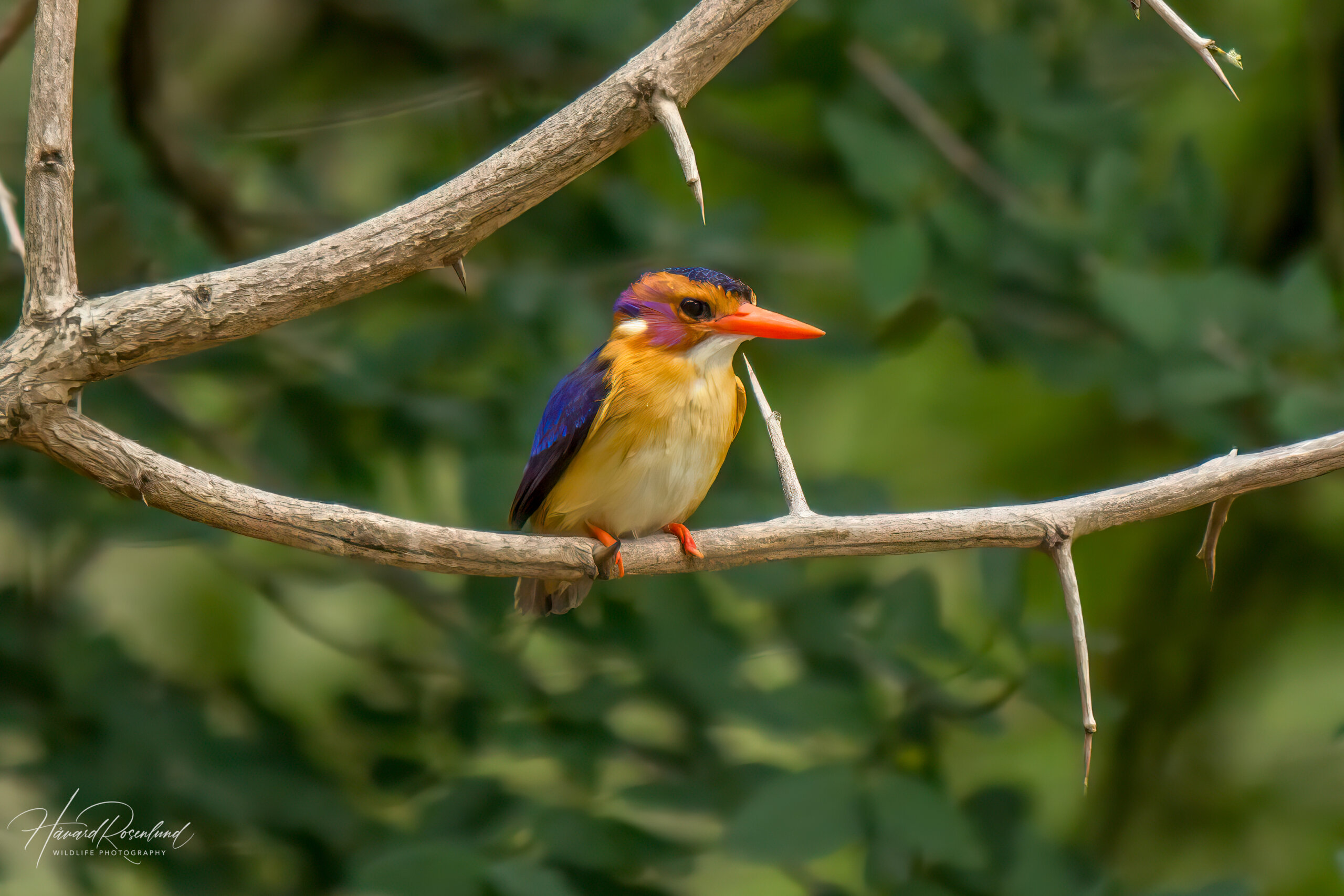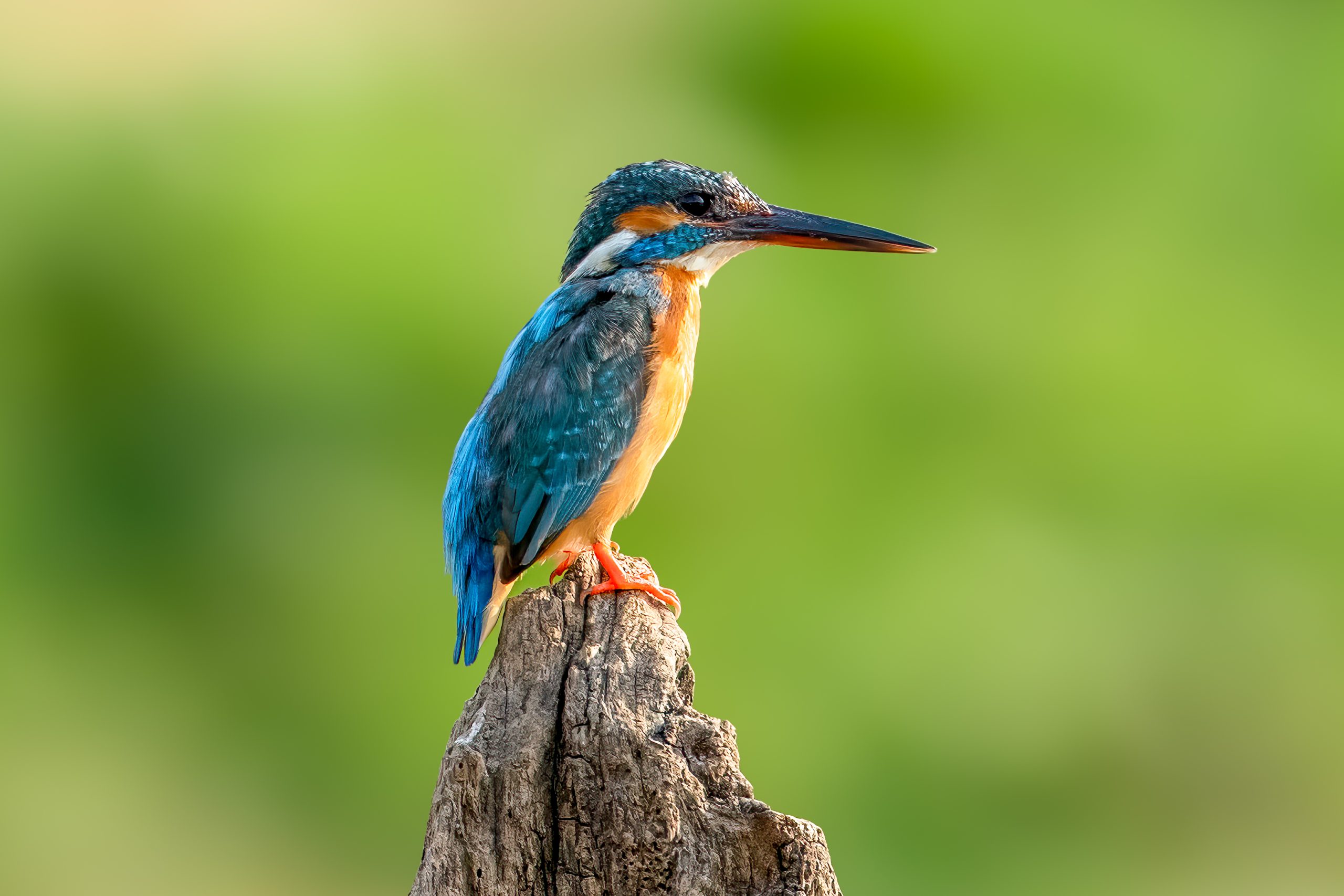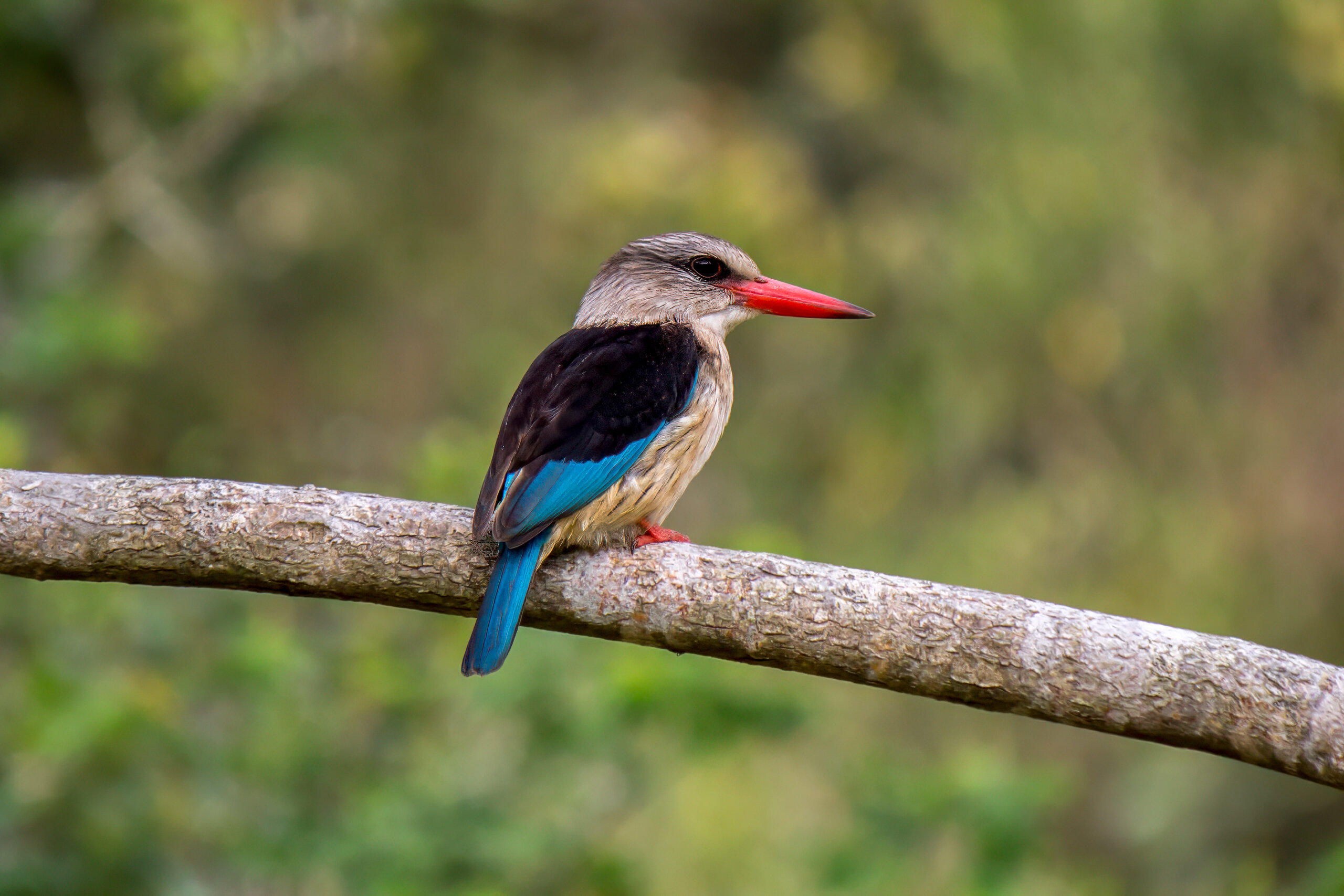African Pygmy Kingfisher
(Ispidina picta)
Description
The African pygmy kingfisher (Ispidina picta) is one of the smallest kingfishers in the world and the second smallest in Africa after the similar African dwarf kingfisher (Ispidina lecontei) found only in the rainforests of Central and West Africa. The African pygmy kingfisher only reaches a length of 12 cm (4.7 in). It is found across most of sub-Saharan Africa but avoids the driest regions in Southern Africa and the Horn of Africa. Populations in West, Central and East Africa are resident all year round, whereas populations in Southern Africa and the edge of the Sahara are migratory.
It is a colorful bird with dark blue and orange plumage. It has a dark blue patch on the head, which separates it from the dwarf kingfisher. It also has a telltale violet patch on the ears which separates it from the somewhat larger and similar malachite kingfisher (Corythornis cristatus), a species that shares much of the same range. Sexes are similar, but juveniles have a black bill, instead of the orange bill seen on adults.
Diet & Habitat
Although it looks similar to many river kingfishers, such as the malachite kingfisher and the Eurasian common kingfisher (Alcedo atthis), the African pygmy kingfisher is more of a woodland and forest species. It is also found in savanna habitats. It does not fish and is therefore not bound to water. It is mainly insectivorous, with a diet consisting of medium sized insects and spiders, but it will also eat small lizards, frogs and even crabs. Prey is caught and crushed in the beak or on a perch.
Nesting
The African pygmy kingfisher is typically a monogamous and solitary breeder, but pairs have been found nesting close to other pairs in some areas. Breeding season varies with geographical location. Nests are made in burrows dug by both sexes, often in sand banks, gullies, or sometimes termite mounds. 3-6 eggs are laid and both sexes incubate and feed the young. Eggs hatch after 18 days, and chicks fledge after an additional 18 days. They are independent after another 5 days.
Status
The African pygmy kingfisher has a very large range across most of Africa, and the populations is believed to be stable. It it is listed as least concern on the IUCN Red List.







